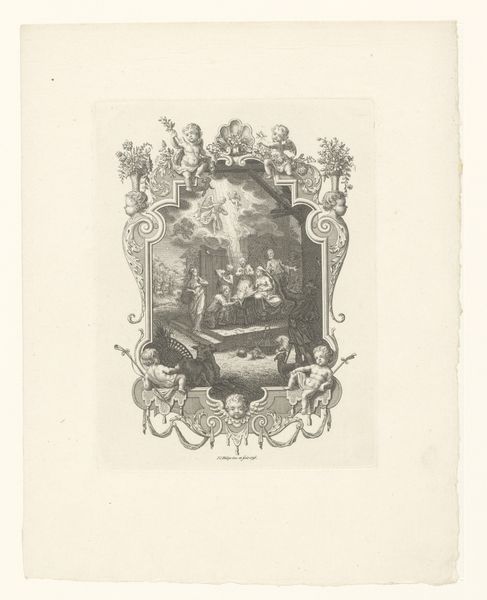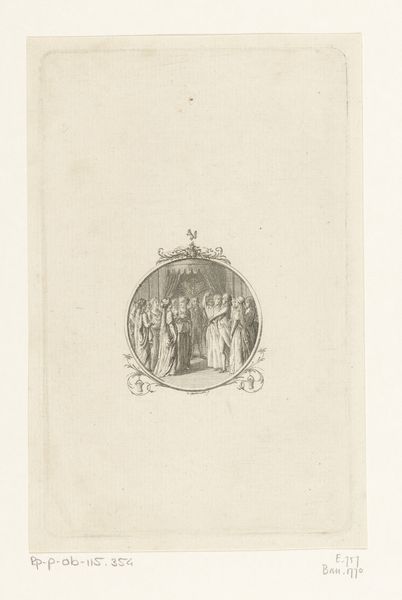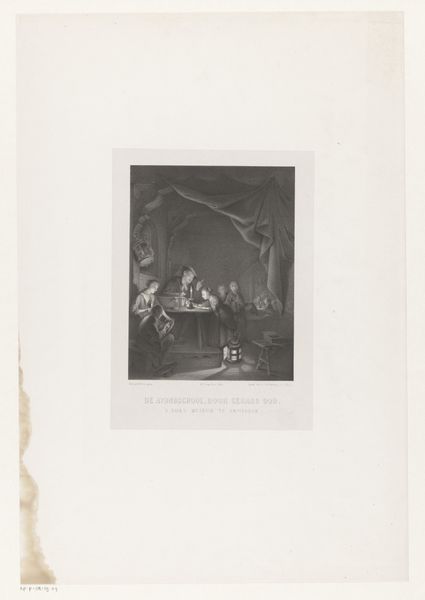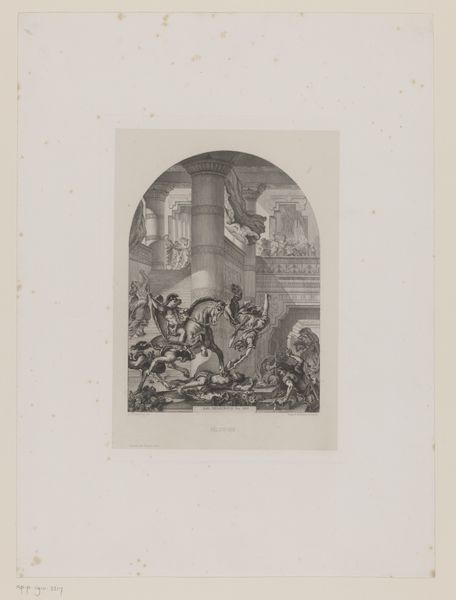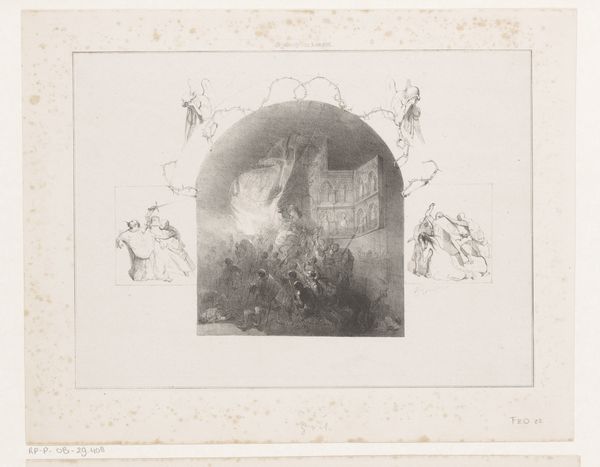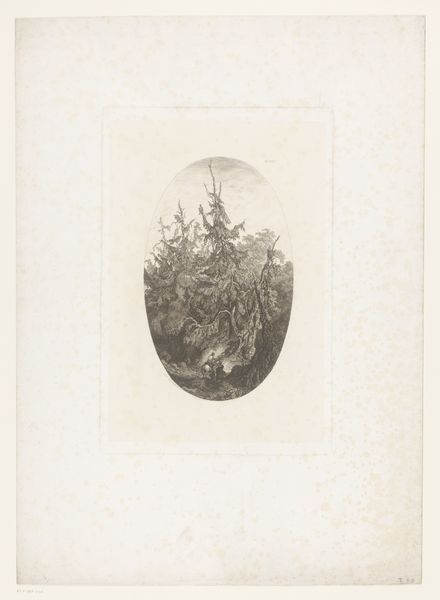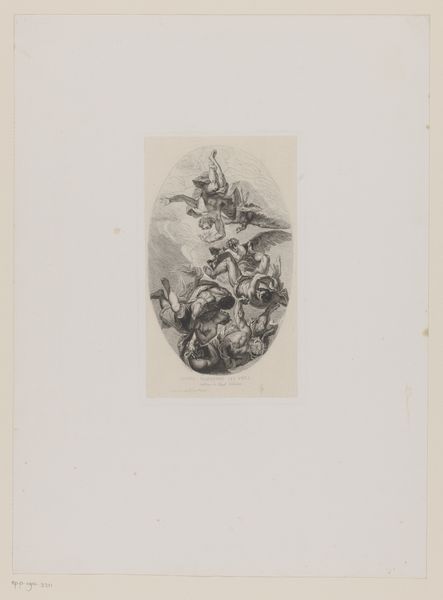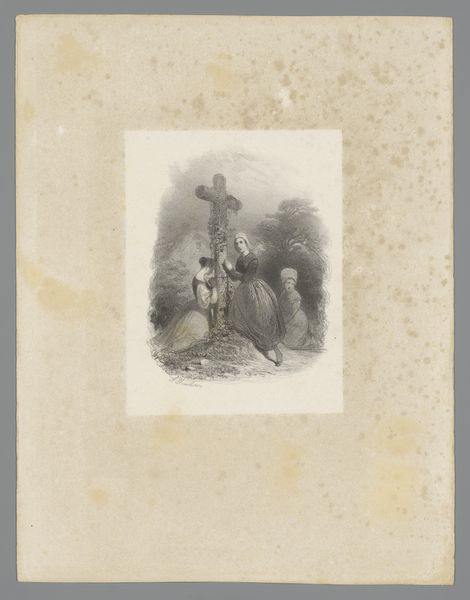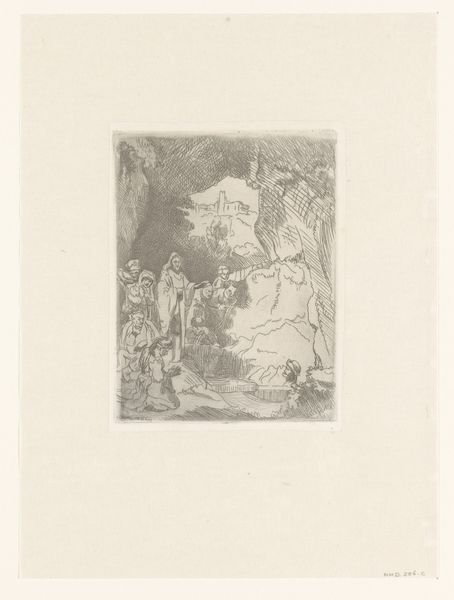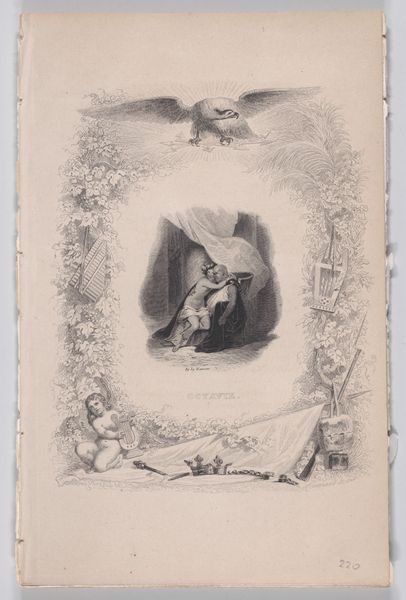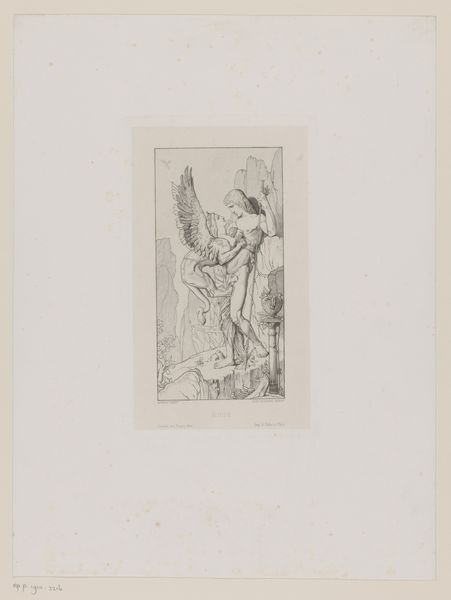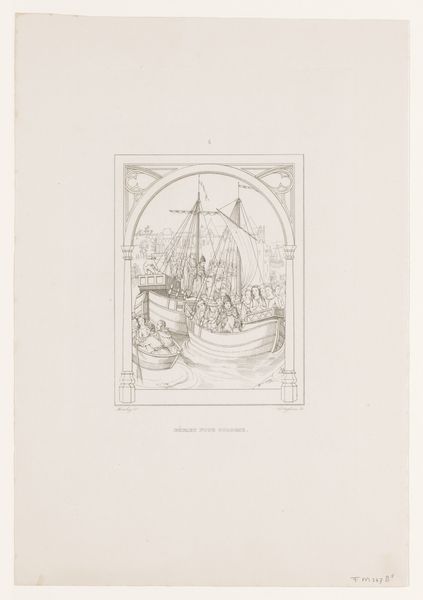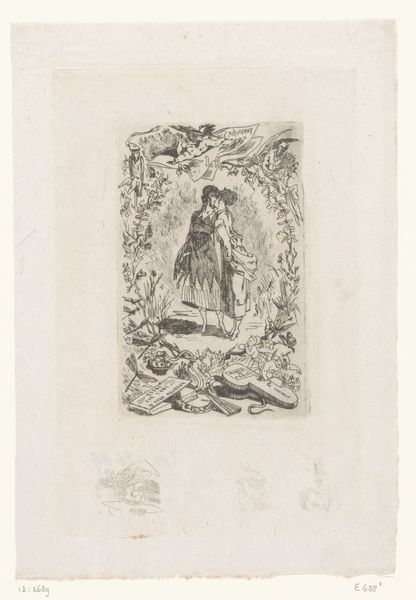
Dimensions: height 257 mm, width 184 mm
Copyright: Rijks Museum: Open Domain
Curator: What a fascinating print! This is "Religieuze allegorie," or "Religious Allegory," by Edouard Vermorcken, likely created sometime between 1830 and 1904. The medium is engraving, giving it a wonderfully detailed, almost dreamlike quality. Editor: It certainly feels ethereal. The hazy, almost smoky line work gives the scene a quality of being pulled from a memory. It's an oddly intimate vision, considering its grand religious theme. Curator: Precisely! Vermorcken’s historical context places him within the currents of 19th-century Romanticism and its complex relationship with religious imagery. The work likely reflects a time of questioning established institutions and seeking a more personal connection with faith. Engravings such as these were, of course, more widely accessible than paintings, so these ideas were readily shared. Editor: The central image, the angel with the cross, looms over the figures below, radiating both comfort and judgment. But my eye keeps returning to the figures in monastic robes; the image places them to the left of the composition, huddled close together. What statement might Vermorcken be making by visually highlighting that act of brotherhood in such a religious work? Curator: A pertinent question. Allegories, of course, were immensely popular during this period. We might interpret this scene as reflecting social anxieties around religious reform movements—a conservative plea for unity amidst societal change, presented within a readily digestible visual framework. Editor: The open book just visible within the frame of the pointed arch… it clearly symbolizes knowledge, perhaps divine knowledge, yet it remains partly obscured by the overgrown foliage. It feels like Vermorcken is layering complexity here. He certainly evokes the simultaneous presence of accessibility and obfuscation of truth through symbolism, doesn’t he? Curator: Indeed, these visual elements provided a platform for engaging with complex theological ideas on a social level. Printmaking held its own sociopolitical weight at this time in European History. Editor: Studying this engraving reminds me of the power of visual allegory, its ability to embed multifaceted cultural meaning within deceptively simple forms. Curator: And considering its context really deepens our understanding of the social dialogues present within 19th century romanticism. Thank you for these iconographic considerations!
Comments
No comments
Be the first to comment and join the conversation on the ultimate creative platform.
